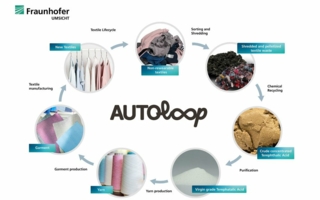17/01/2024 – Elastane (spandex)
Barriers in the recycling loop threaten existence
Elastane (spandex) fibers face criticism because of the barrier they pose to the recycling of textile waste, and this criticism is spurring manufacturers to explore alternatives to elastane which are more easily recyclable, according to “Stretch fibres: expanding horizons beyond elastane”— a 34-page report from the global business information company Textiles Intelligence. If a breakthrough is made in this field, the global market for elastane could encounter considerable disruption.
Addressing environmental concerns surrounding elastane
Elastane fibers, renowned for their comfort and stretch, dominate the global market for stretch fibers, playing a crucial role in various textile applications such as in the manufacture of athleisure wear, compression garments, hosiery, and medical textiles like bandages and diapers. However, concerns arise regarding the recyclability of garments containing elastane blends. Even a minimal 1% of elastane in an all-cotton T-shirt can lead to rejection at a recycling sorting plant, prompting the need for effective removal of elastane for proper textile waste recycling. As a result, elastane fibres must be removed from a garment to facilitate effective textile waste recycling at the end of the garment´s useful life. But removal is complicated by the fact that existing solvents for separating elastane from other fibres are toxic and hazardous in the environment. Such solvents include dimethylformamide (DMF) and dimethylacetamide (DMA).
Exploring eco-friendly stretch fibers
The challenges associated with recycling textiles containing elastane fibers are exacerbated by evidence linking these fibers to microfiber pollution. Fabrics with elastane reportedly shed more microfibers, especially during domestic laundering. In response to these concerns, manufacturers are actively exploring alternatives to elastane that align better with existing recycling technologies and pose a lower risk of contributing to microfiber pollution. Promising alternatives include stretch fibers which are made using bio-based materials. For example, Covation Biomaterials produces a stretch fiber called “Sorona” which is made using propane-1,3-diol (PDO) derived from glucose obtained from corn, while Fulgars´ stretch fibre called “Evo” is made using a biopolymer derived from the oil of castor beans.
Looking ahead, it is likely that further advancements in the development of alternative stretch fibers will pose a risk to the global market for elastane — and they could cause considerable disruption. To secure the future of elastane, research and investment will be pivotal. In particular, innovation in technologies for reducing microfibre shedding from fabrics which contain elastane fibers is said to be key, and the development of environmentally sustainable methods for separating elastane from textiles will prove to be critical.




